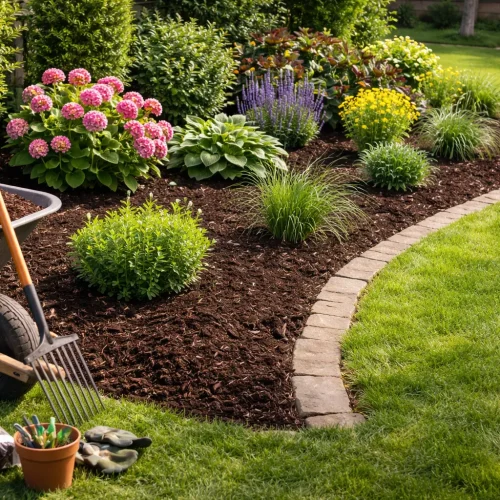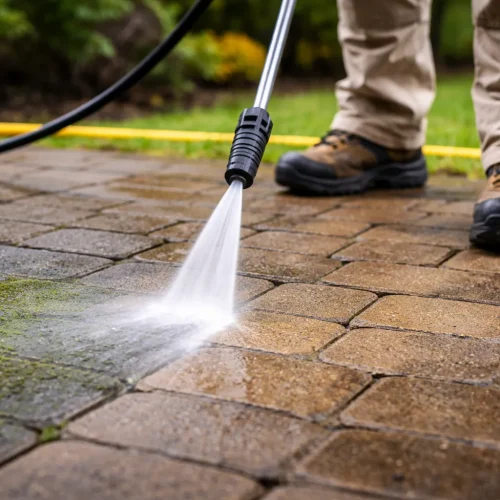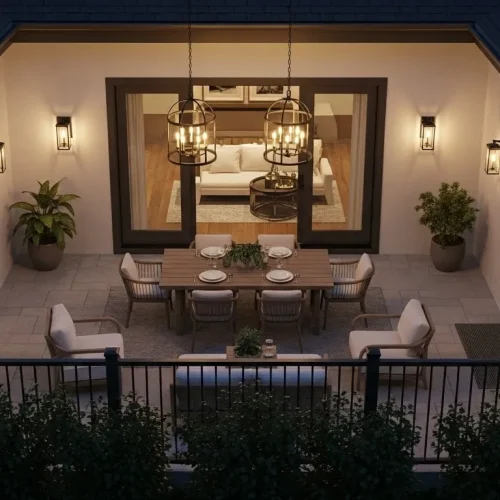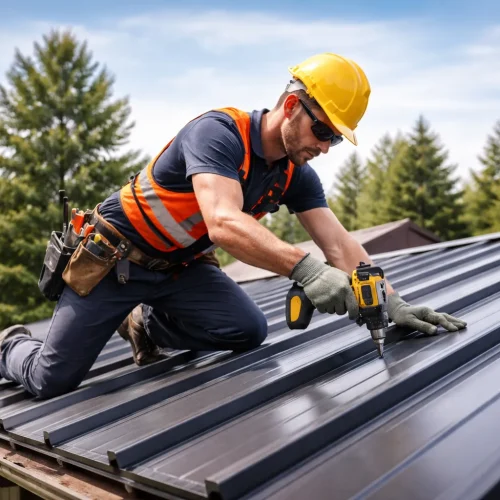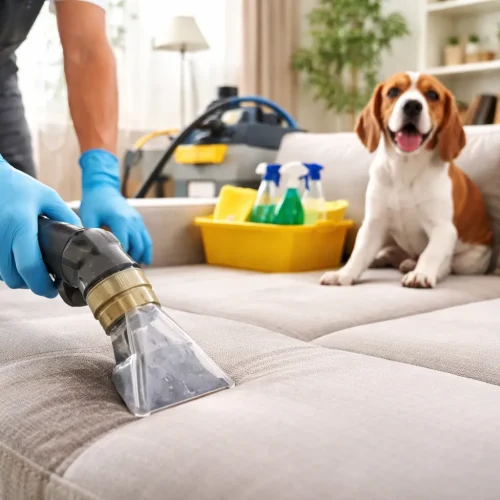
What’s the worst time for a toilet to clog? Probably when guests are minutes away and you’re in pajamas. That’s how home disasters usually work always bad timing. A burst pipe, flickering power, or strange smell can turn comfort into chaos fast. We treat our homes as safe zones, but when trouble hits and you don’t even know where the shut-off valve is, decor won’t help. Emergencies don’t care about your floor plan. That’s why every home needs a clear, practical plan.
In this blog, we will share how to build a crisis-ready home without panic, guesswork, or buying 42 flashlights you’ll never use.
The Myth of the “Low-Maintenance” House
It’s tempting to believe a newer or remodeled home means fewer problems. That belief usually lasts until the first hard freeze or summer power outage. Even houses built within the last five years can run into trouble. Appliances fail. Systems overload. And let’s not forget the human element kids flushing entire rolls of paper towels or pets chewing through wires.
More people are starting to recognize this. After a decade of headlines about record-breaking hurricanes, surprise winter storms, and supply chain breakdowns, homeowners are finally asking the right questions. Not just “How do I make this pretty?” but “How do I make this work when everything else doesn’t?”
When it comes to home readiness, plumbing is one of the most underestimated systems. People usually only think about it when it stops working. But knowing who to call for reliable plumbing services before something breaks can save you time, money, and a lot of yelling into towels on the floor. It’s one of those decisions that feels small but becomes a lifeline when things go sideways.
Making the Invisible Work for You
Every home is full of systems you can’t see. Pipes, wires, insulation, drainage, ducts. These are the things that quietly keep life moving. They don’t care about your work deadline or weekend plans. But when they stop working, your entire day (or week) can spiral fast.
The problem? Most homeowners aren’t trained to notice early warning signs. A slow drain isn’t just annoying. It could mean something more serious is building up in your main line. That burnt smell when you run the dryer might not be “just dust.” And if your outlets flicker when it rains, it’s not something to put off until next spring.
Creating a game plan doesn’t mean you need to become a DIY expert. It means knowing enough to catch the warning signs and knowing who to call when they show up. Keep a list of emergency contacts—not just 911, but your electrician, HVAC tech, and yes, your plumber. It’s easier to make those decisions with a clear head when the house isn’t shaking from a washing machine gone rogue.
Designing with Disruption in Mind
Open floor plans are great. But have you ever tried isolating a mess in one? A single leak can take out your kitchen and your living room in under 20 minutes. Modern homes are interconnected, which means the smallest issues can spread fast. That’s why design matters—especially for emergencies. Put shelves near the fuse box so flashlights are close when the lights go out. Store towels and a wet/dry vacuum where leaks are likely to happen. And make sure your smoke and carbon monoxide detectors actually work. Not just because the manual says to, but because seconds count when something’s wrong. It’s not about living in fear. It’s about making small tweaks that give you back control when things feel chaotic. Being prepared shouldn’t mean building a bunker. It should mean you can pivot quickly when stuff happens.
Don’t Forget the People
Your house isn’t the only thing that needs a plan. You do, too. So does everyone who lives there. In a true emergency, it’s not just about equipment—it’s about communication. Who grabs the go bag? Who checks on the pets? Where do you all meet if you need to evacuate? One of the best things you can do is talk through these scenarios when it’s calm. Make it a family challenge. Turn off the power for an hour and see how long it takes to find what you need. Try turning off the water main and then turning it back on. Make sure your household knows where that shutoff is. It may not sound exciting, but it makes all the difference when water is rushing across your hardwood floors at midnight. If you live alone, this still matters. Have a check-in person. Someone who knows where you keep your spare key, your meds, and your emergency numbers. Isolation makes emergencies harder, but connection makes them easier.
When Prevention Pays Off
Emergencies can’t always be avoided, but many can be softened with a little prevention. Replace that aging water heater before it turns your garage into a wading pool. Fix the minor leak before it molds your drywall. Upgrade your circuit panel if you’ve added a bunch of tech in the last few years. It’s tempting to ignore these projects because they aren’t visible. You don’t get compliments on a new sump pump. But when it rains hard and your basement stays dry? That’s the moment you realize just how good your past decisions were. Think of it like regular checkups. Your house, like your health, benefits from early intervention. Don’t wait until it’s a full-blown emergency. By then, the fix is more expensive, more stressful, and more likely to disrupt your life.
Future-Proofing Isn’t Just for Tech
We live in a time where unpredictability is standard. Weather shifts faster. Infrastructure is aging. And supply chains still haven’t returned to pre-pandemic normal. All of this means your home has to be flexible and ready not just pretty and functional. So stock the basics: batteries, bottled water, a fire extinguisher, a radio that doesn’t need Wi-Fi. Keep your phone charged and your gas tank at least half full. These aren’t overreactions. They’re new basics.
Conclusion
When homes are designed and maintained with resilience in mind, they stop being vulnerable. They become strongholds. Places where you’re not just reacting to crises, but staying one step ahead. A crisis game plan won’t stop everything from going wrong. But it will stop everything from falling apart when it does. And that’s the kind of peace of mind that no design trend or Instagram-worthy kitchen can give you.
FAQs
A home crisis game plan is a step-by-step strategy that helps homeowners and families respond quickly and safely to emergencies like leaks, power outages, or fires.
Even modern homes can face sudden issues such as power failures, plumbing leaks, or system malfunctions. A crisis plan helps you act fast instead of panicking when these occur.
It should include key emergency contacts, locations of shut-off valves and circuit breakers, evacuation routes, and a supply checklist for essential items like water, flashlights, and first aid.
Experts recommend reviewing your plan every 6–12 months or whenever major household changes occur, like new appliances, renovations, or family members moving in or out.
Know where your main shut-off valve is, schedule regular maintenance, and keep contact information for a trusted plumber before problems arise.
Slow drains, flickering lights, unusual smells, or damp walls often signal hidden issues like electrical faults, leaks, or clogs that require immediate attention.
Store emergency tools near critical areas, ensure detectors are functional, and design storage so essentials are accessible during power or water outages.
Conduct drills, assign roles (like who handles pets or the go bag), and make it a fun challenge—this ensures everyone knows what to do without fear or confusion.
Regular maintenance, early repairs, and timely upgrades help you catch small issues before they turn into costly or dangerous emergencies.
Keep flashlights, batteries, bottled water, a manual radio, first aid supplies, a fire extinguisher, and important documents in a safe, easy-to-access location.




